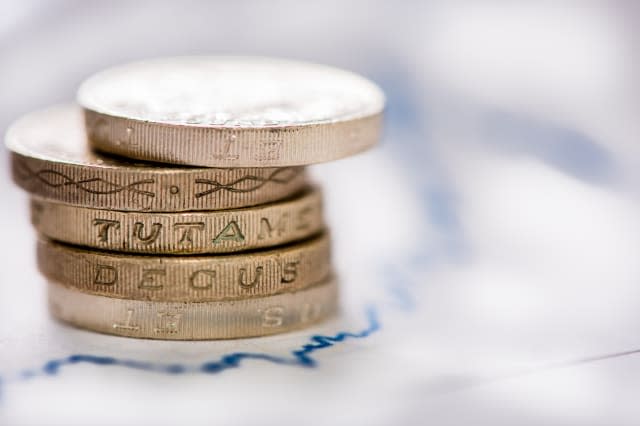Sterling steadies after two-day decline, more losses seen

Sterling bounced on Thursday after dropping below $1.30 for the first time in more than three decades on fallout from Britain's vote to leave the European Union.
Analysts and traders are convinced more weakness is on the cards, with some forecasting a fall to the low $1.20s and others expecting eventual parity with the euro, compared with current levels around 85 pence.
"Buyers came back into the market with conviction after the fall to below $1.28," Western Union's head of corporate currency sales, Tobias Davis, said.
"But the 31-year low still sets the scene for a potential shift towards 1.25, as long-term technical levels coupled with (fundamentals) will maintain this vulnerability."
The suspension of half a dozen open-ended property funds this week - taken as a sign of growing financial stress after the Brexit vote - has dominated trading, but some brighter U.S. economic data on Wednesday helped lift the mood.
Dealers said the U.S. data had squeezed a market where almost everyone is betting on more sterling weakness, and the pound rose almost one percent against both the dollar and the euro in response.
Official data from U.S.-based DTCC shows almost no bets in the options market on sterling dropping below $1.25, however traders say such bets have been made in the direct over-the-counter markets the major banks make for their clients.
By midday in London, sterling was trading up 0.7 percent at $1.3012. Against the euro it gained almost 1 percent to 85.126 pence per euro.
"This isn't any kind of turnaround really, it is just that the market is very short of sterling so any pause will see some retracement as people close out some of those open positions," said a trader with one large bank in London.
The prospect of a collapse in the price of property, a market that has attracted billions in foreign investment, has turned attention back to the inflows Britain needs to cover a current account deficit running at 7 percent of national output.
That hints at further big adjustments for sterling. The Bank of England (BoE) for now also appears set on cutting interest rates to help revive growth, rather than raising them to support the pound.
Manufacturing and industrial output data for the three months to May were slightly better than expected, but were largely discounted by markets as they cover a period before the shock of the June 23 referendum.
Markets now price in a full quarter-point hike at the bank's August policy meeting at the latest and a substantial chance of the BoE doing more by September as the economy feels the full force of any Brexit-related slowdown in investment and trade.
"With May's manufacturing data yet to capture the new post-Brexit reality, many observers expect production to slump further in the coming months," UFX.com managing director Dennis de Jong said. (Editing by Louise Ireland)



